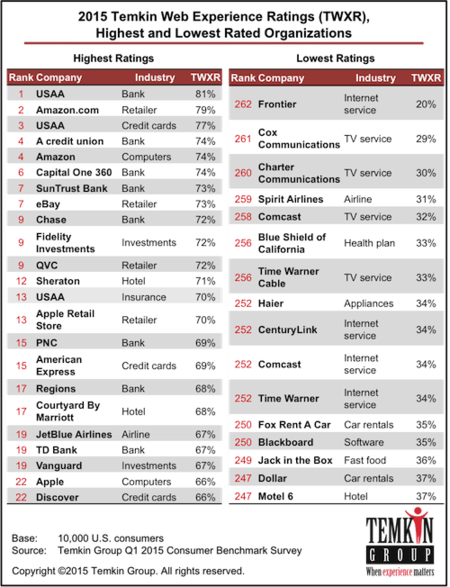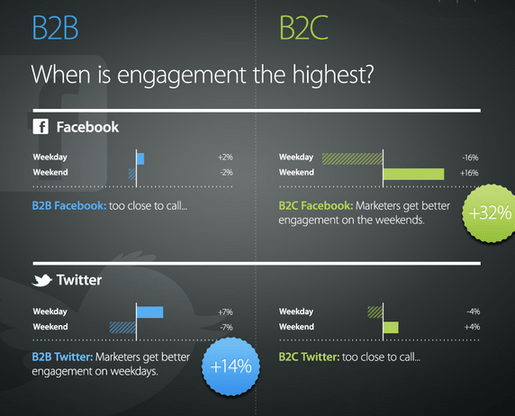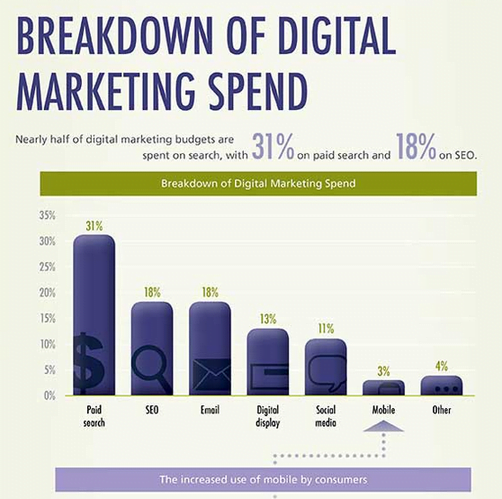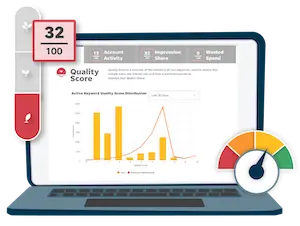
Marketing data is one of your most diverse and powerful tools as a content producer. Without hard data to support your assertions, even the most articulate points of view can fall short. This is why it’s so important to back up your arguments with data and empirical evidence.
In today’s post, I’ll share seven sources of marketing stats that you can use to strengthen your content. By using (and appropriately citing, of course) this data in your content, your points will be more persuasive, your arguments more compelling, and your content more credible.
Let’s get started!
Marketing Data Resource #7: MarketingCharts.com
MarketingCharts.com is one of the best places to find comprehensive marketing data to support your content.
The site offers a wide range of – you guessed it – marketing charts on a diverse array of topics, from social media adoption by demographic to the effectiveness of various B2B and B2C marketing strategies.
Most of the charts and marketing data available here is curated from other sources, making it a convenient place to look for information without having to scour the web for hours, though some of it (including the example below) is original content. However, some of MarketingCharts.com’s original data is only available for purchase, so if you’re hoping to get your hands on everything for free, you’re out of luck. The quality of the gated content is very high, though, so it may be worth investing a few bucks, depending on the scope and complexity of your content project.
MORE: 8 Cool Marketing Analysis Tools for Data Junkies
MarketingCharts.com Case Study: US Companies With the Best and Worst Customer Experience Ratings in 2015
This is a good example of the kind of curated marketing stats you can expect to find on MarketingCharts.com. I actually referenced this very report in a previous blog post about customer testimonials.
Read the full report here, or check out the homepage to see other marketing data available at MarketingCharts.com.
Marketing Data Resource #6: Buffer
Not to gush or get all sentimental, but we love Buffer. The content on the Buffer blog is consistently excellent, and if you’re not reading it on a regular basis, you need to start. Today.
One of the reasons I’m such a big fan of Buffer’s content is that they back up many of their points with data. In fact, Buffer is one of the most data-intensive digital marketing blogs out there, but the content producers over there manage to make their articles informative and entertaining – one of the cardinal rules of making great content.
Buffer Case Study: A Scientific Guide to Posting Tweets, Facebook Posts, Emails, and Blog Posts at the Best Times
This post has been shared thousands of times, and for good reason. It’s packed hard data about the best times to share content on social media:
Check out the full post here, and feast your eyes on all the delicious stats within.
Marketing Data Resource #5: Moz
When it comes to marketing data, Moz is hard to beat. Arguably the web’s leading resource on SEO, it’s no surprise that Moz crushes it when it comes to using marketing data in its content.
As you’d expect from one of the web’s leading authorities on SEO, much of Moz’s content is indexed highly and has been linked back to thousands of times. WordStream has referenced Moz’s content countless times, and it remains the go-to for SEOs and digital marketers alike.
Moz has tons of marketing data that you can cite in your own content, and even if you’re not writing about SEO, Moz’s content makes for a fascinating read.
Moz Case Study: Big Data, Big Problems: 4 Major Link Indexes Compared
Link indexes are crucial to SEOs, but which one to trust? With several major link indexes offering similar data, determining which is the most accurate is a challenge for even experienced SEOs. Fortunately, this post by Russ Jones leverages the power of data to arrive at some interesting conclusions.
Marketing Data Resource #4: MarketingProfs.com
MarketingProfs is another excellent source of marketing data. Much of the data-driven marketing content at MarketingProfs is original, though they also curate a lot of data to make it more presentable and relevant to their audience.
MarketingProfs is home to some of the digital marketing industry’s most prominent thought leaders, including Ann Handley, and regular publishes content from other industry luminaries such as Content Marketing Institute’s Joe Pulizzi, making it one of the most authoritative marketing sites on the web.
MarketingProfs Case Study: State of Search Results: Budgeting Trends
Trends and projections are among the most popular types of marketing data, and this example from MarketingProfs shows why:
This report highlights how and where digital marketers are allocating their budgets. For content producers hoping to connect spending trends with wider patterns in digital marketing, reports like this are essential.
Marketing Data Resource #3: ChartPorn
So far, we’ve focused on industry blogs as primary sources of marketing stats, but there are plenty of other places you can get your hands on some sexy data for your content projects, one of the best of which is ChartPorn.
ChartPorn isn’t a marketing-exclusive data resource. In fact, you can find data visualizations on a huge range of topics, from genealogy and history to economics and foreign policy. All of ChartPorn’s data is curated from other sources, making it another quick and easy way to search for graphs and stats from a variety of external sources.
However, while some of the stats on ChartPorn might seem irrelevant to marketers, a lot of the data on can actually be a great accompaniment to your content – just remember that correlation does not equal causation!
ChartPorn Case Study: The R.I.P. Report – Startup Death Trends
Startup life isn’t easy, and success is far from guaranteed, two facts that are exemplified perfectly by this curated data from CB Insights in its Startup Death Trends report:
Seems like being an Internet company is a pretty tough gig, according to this data.
Marketing Data Resource #2: KISSmetrics
KISSmetrics is another of the most popular digital marketing blogs, and another great source of marketing data that you can reference in your content.
The KISSmetrics blog covers a wide variety of topics, from conversion rate optimization to social media usage. This makes KISSmetrics one of the most diverse digital marketing blogs out there, and the perfect source of marketing data for your next project.
KISSmetrics Case Study: How Colors Affect Conversions
Aside from its excellent blog content, KISSmetrics is renowned for its superb infographics. Case in point, this infographic on how colors affect conversions:
As well as being very nice to look at, this infographic is packed with data that could strengthen any conversion rate-based content project. KISSmetrics has dozens of infographics like this, and if you haven’t checked them out before, you definitely should.
Marketing Data Source #1: HubSpot
Although this list was presented in no particular order, we’ve saved one of the best sources of marketing data for last – HubSpot.
Given HubSpot’s unique and enviable position in the digital marketing industry, it’s no wonder why so many content producers turn to HubSpot for original marketing data to support their stories. In addition to offering quality content (published to a demanding editorial schedule that few other blogs can match), the diversity of HubSpot’s content means there’s something for everyone.
HubSpot Case Study: The Ultimate List of Marketing Statistics
Sure, it might not be as pretty as some of the other resources listed in this post, but in terms of its sheer comprehensiveness, HubSpot’s Ultimate List of Marketing Statistics is hard to beat.
This monstrous compendium of marketing data has juicy stats for just about everything you could think of, including SEO, social media, blogging, lead generation, and email marketing. Seriously, if you need appropriately cited statistics for your content, look no further.
Bonus Marketing Data Resource: WordStream
Of course, no roundup of marketing data resources would be complete without a mention of our own resources.
We regularly post original data about PPC and other topics that you can use in your content. Recently, we’ve published data on the most and least expensive CPCs across the U.S. (and similar data on a global scale), and general search trends by state.
We also publish infographics that make great reference resources. Check out some of our most popular infographics:
- What Is Google Ads? How the Google Ads Auction Works
- The Top 20 Most Expensive Keywords in Google Ads Advertising
- The 20 Most Expensive Keywords in Bing Ads
WordStream Case Study: The Top 20 Most Expensive Keywords in Google Ads
For an example of the kind of data we publish, check out this infographic on the top 20 most expensive keywords in Google Ads (formerly known as Google AdWords):
This infographic has been referenced and linked back to dozens of times from a wide range of industry publications and leading digital marketing blogs. The full infographic is huge, so I’ve only included a sneak preview here. Click on the image or this link to see the entire infographic.
























